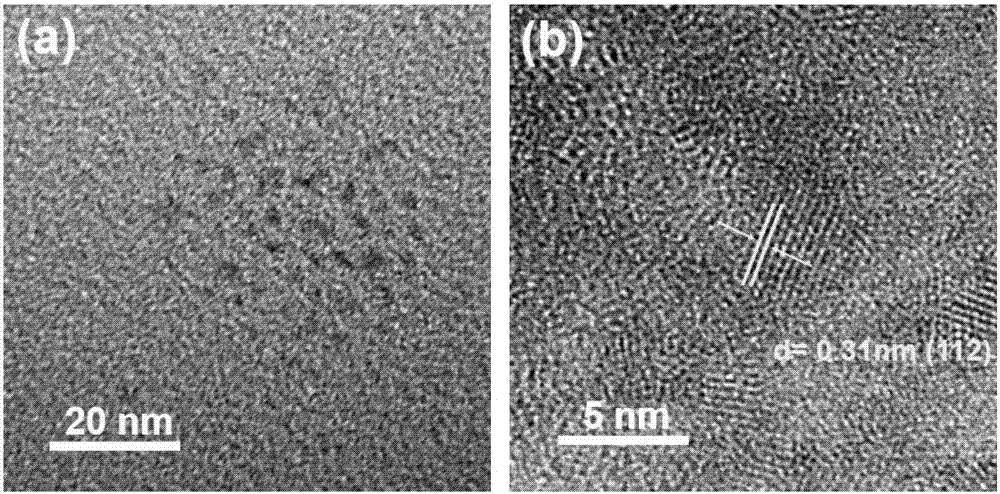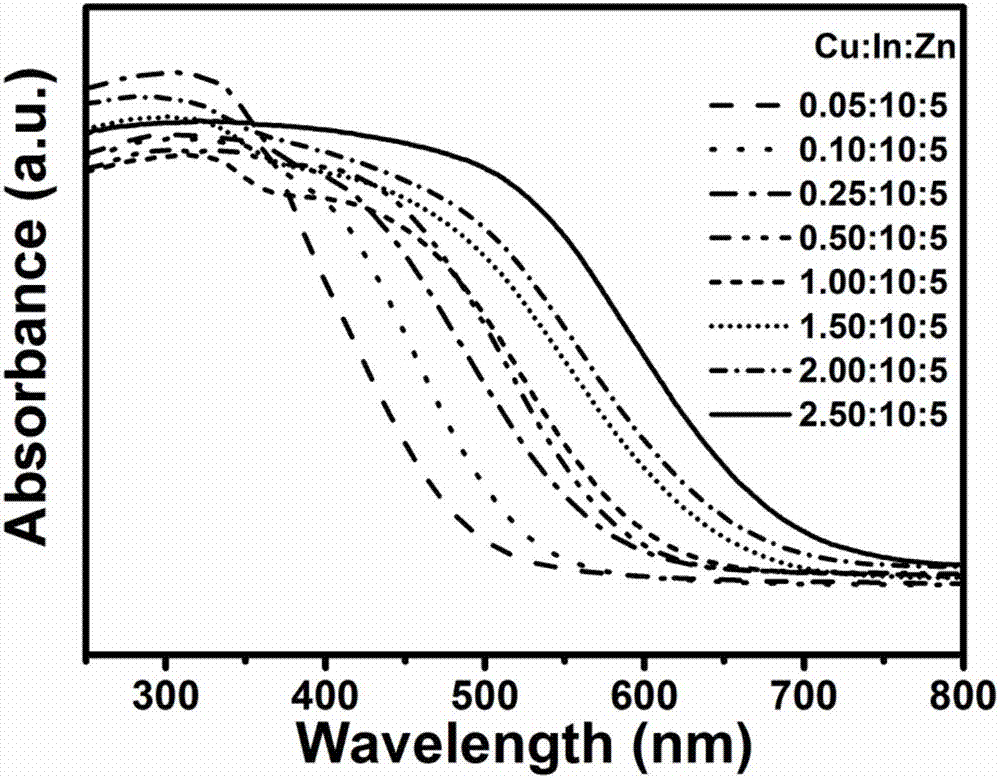Method of preparing quaternary sulfide quantum dot photocatalyst
A photocatalyst, quantum dot technology, applied in physical/chemical process catalysts, chemical instruments and methods, chemical/physical processes, etc.
- Summary
- Abstract
- Description
- Claims
- Application Information
AI Technical Summary
Problems solved by technology
Method used
Image
Examples
Embodiment 1C
[0016] The preparation of embodiment 1CuInZnS quantum dot photocatalyst
[0017] Weigh copper acetate, 0.139 grams of zinc acetate, 0.4867 grams of indium nitrate, mix and dissolve in 4.125 milliliters of water, here in order to synthesize CuInZnS photocatalysts with different proportions of copper, add different amounts of copper acetate 0.0127g-0.0635g (CIZS- 0.05-CIZS-2.5), after uniform mixing, add 0.4537 g of L-cysteine aqueous solution. Then use 1 mole per liter of sodium hydroxide to adjust the pH to 8.5, add 0.183 g of thioacetamide solution, mix evenly by ultrasonic, hydrothermally react in an oven at 110°C for 4 hours, and cool to room temperature. When washing and centrifuging, first add a small amount of water to dissolve it, then add ethanol to precipitate and centrifuge, and repeat this two to three times. Finally, the obtained CuInZnS quantum is dissolved in water and stored, which is convenient for the test and analysis of the structure and performance in th...
Embodiment 2
[0018] Characterization analysis of embodiment 2CuInZnS quantum dot photocatalyst
[0019] Such as figure 1 As shown, it can be seen from the figure that with the increase of copper content, the diffraction main peak type of CuInZnS quantum dot photocatalyst basically does not change, but the main peak slightly shifts to a larger wave number, which may be due to the further interaction between copper and quantum dots.
[0020] Such as figure 2 As shown, it can be seen from the figure that we have successfully prepared quantum dots with a size of 3-5 nanometers, and the lattice spacing of 0.31 nanometers corresponds to the (112) crystal plane of chalcopyrite CuInZnS quantum dots.
[0021] Such as image 3 As shown, it can be seen from the figure that as the copper content increases, the light absorption redshifts, that is, the increase in the copper content reduces the band gap of the quantum dots and increases the light absorption.
[0022] Such as Figure 4 As shown, it ...
Embodiment 3
[0023] Visible light catalytic activity experiment of embodiment 3CuInZnS quantum dot photocatalyst
[0024] (1) Weigh 100 mg of CuInZnS quantum dot photocatalyst and 2wt% chloroplatinic acid solution and place it in a photocatalytic hydrogen production reactor, add 100 ml of water and an appropriate amount of sacrificial agent to sonicate for 15 minutes.
[0025] (2) The amount of hydrogen gas generated was measured every hour by gas chromatography.
[0026] (3) by Figure 4 It can be seen that the prepared photocatalyst has high visible light catalytic activity, especially the CIZS-1 sample, which is about 11 times more active than CIZS-0.05 for hydrogen production.
PUM
 Login to View More
Login to View More Abstract
Description
Claims
Application Information
 Login to View More
Login to View More - R&D
- Intellectual Property
- Life Sciences
- Materials
- Tech Scout
- Unparalleled Data Quality
- Higher Quality Content
- 60% Fewer Hallucinations
Browse by: Latest US Patents, China's latest patents, Technical Efficacy Thesaurus, Application Domain, Technology Topic, Popular Technical Reports.
© 2025 PatSnap. All rights reserved.Legal|Privacy policy|Modern Slavery Act Transparency Statement|Sitemap|About US| Contact US: help@patsnap.com



